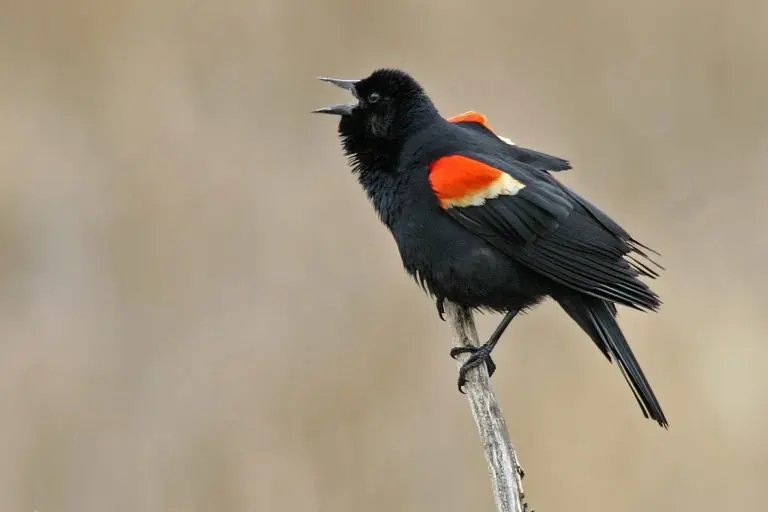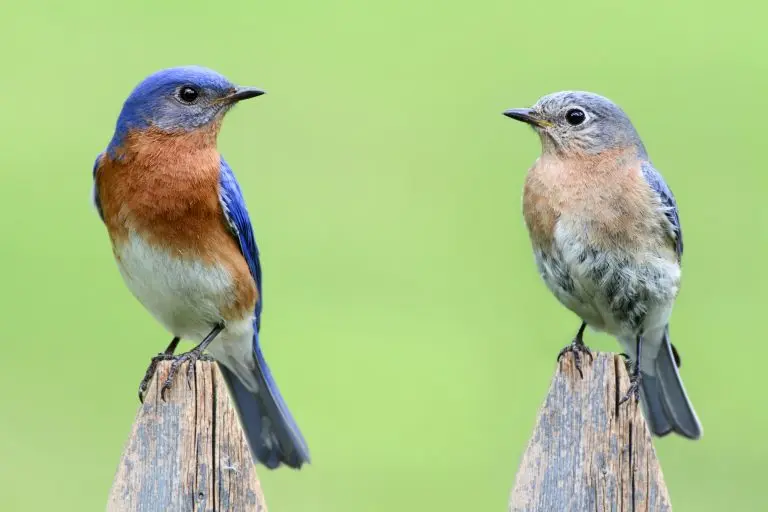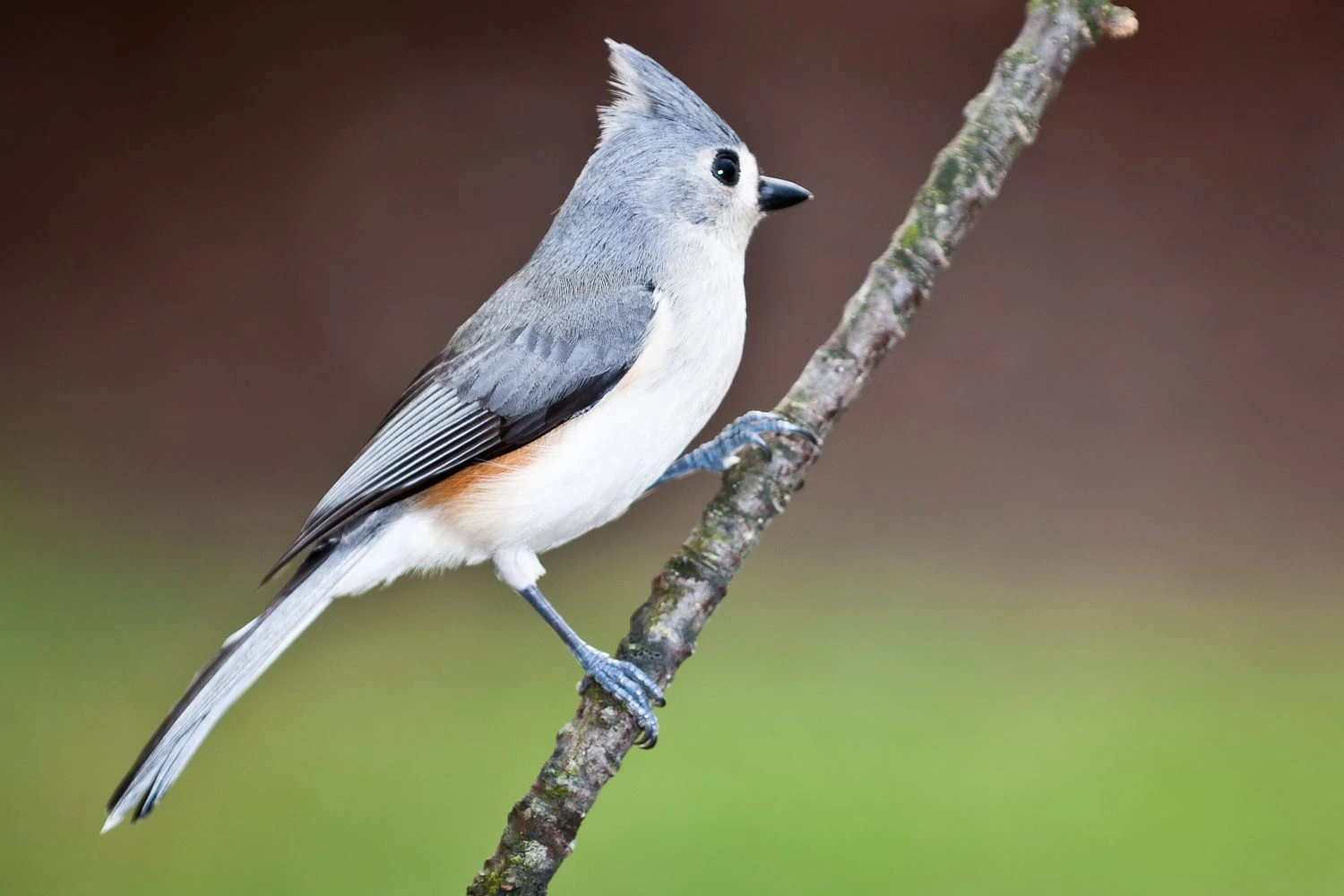
This spring, I will begin a concerted effort to attract more birds to my yard. At this point, what seems to be a solitary mockingbird is the most frequent flyer in my yard. Throughout the summer, I saw him skittering about one of my shrubs. I am surprised that I even noticed him. Mockingbirds are not gloriously colorful birds–like cardinals and bluejays. Mockingbirds are rather beige and brown–not my favorite colors. But since I don’t have many other birds in my yard now, I have grown to appreciate him more and more.
Just today [February 20, 2024], I noticed him. He was resting on the arbor that leads into my rose garden. I have noticed him there several times before. I set up that arbor in December, and I planted two Zephine Drouhin roses–one on either side of the arch. The roses are still small, but it seems that this is my mockingbird’s favorite place to greet me when I am in my garden.
The first time I noticed my mockingbird on that perch was about a month ago. It was cold and bleak. Sleet had begun to fall. He was a warm and welcome sight to me, and I wrote the following:
January 15, 2024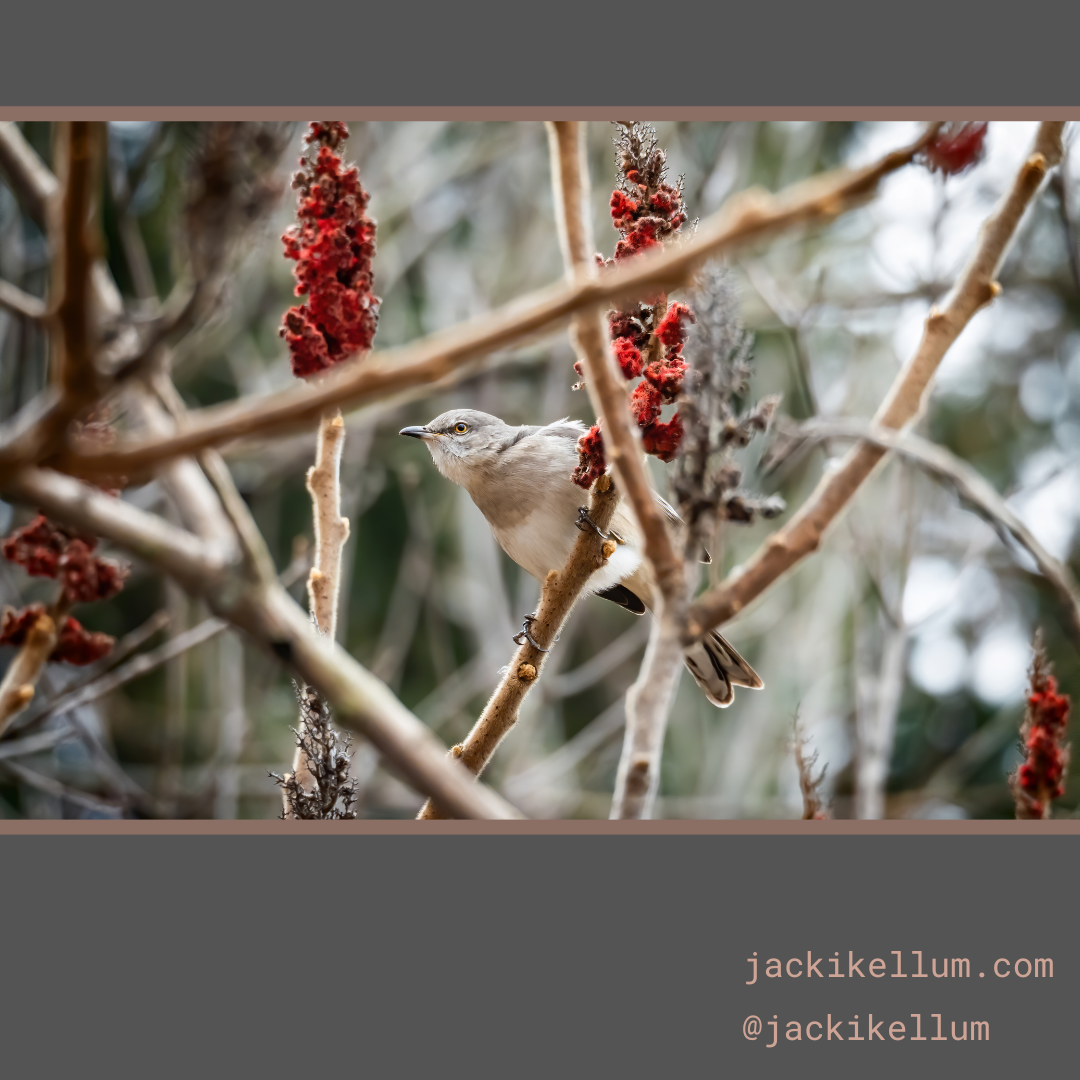
Little shards of sleet fell upon the frozen ground. A mockingbird greeted me at my back door. Chittering chinks of ice filled the air.
Jacki Kellum Journal January 15, 2024

Northern Mockingbird – Image Credit: Flickr
Until today, I have not been outside much since that day, but while I was working in my garden this morning, my bird friend landed on that same arbor. I promptly came inside and began a search for what he might like to eat. When the ground was frozen and snow was on the ground, I turned my cupboards inside out–seeking to feed him, but I realized that what I fed him during the freeze was not what he needed. Mockingbirds do not seem to eat at birdfeeders much, but I discovered that they might enjoy suet. I ordered my best bird a suet cake and a holder for it. He deserves a reward.
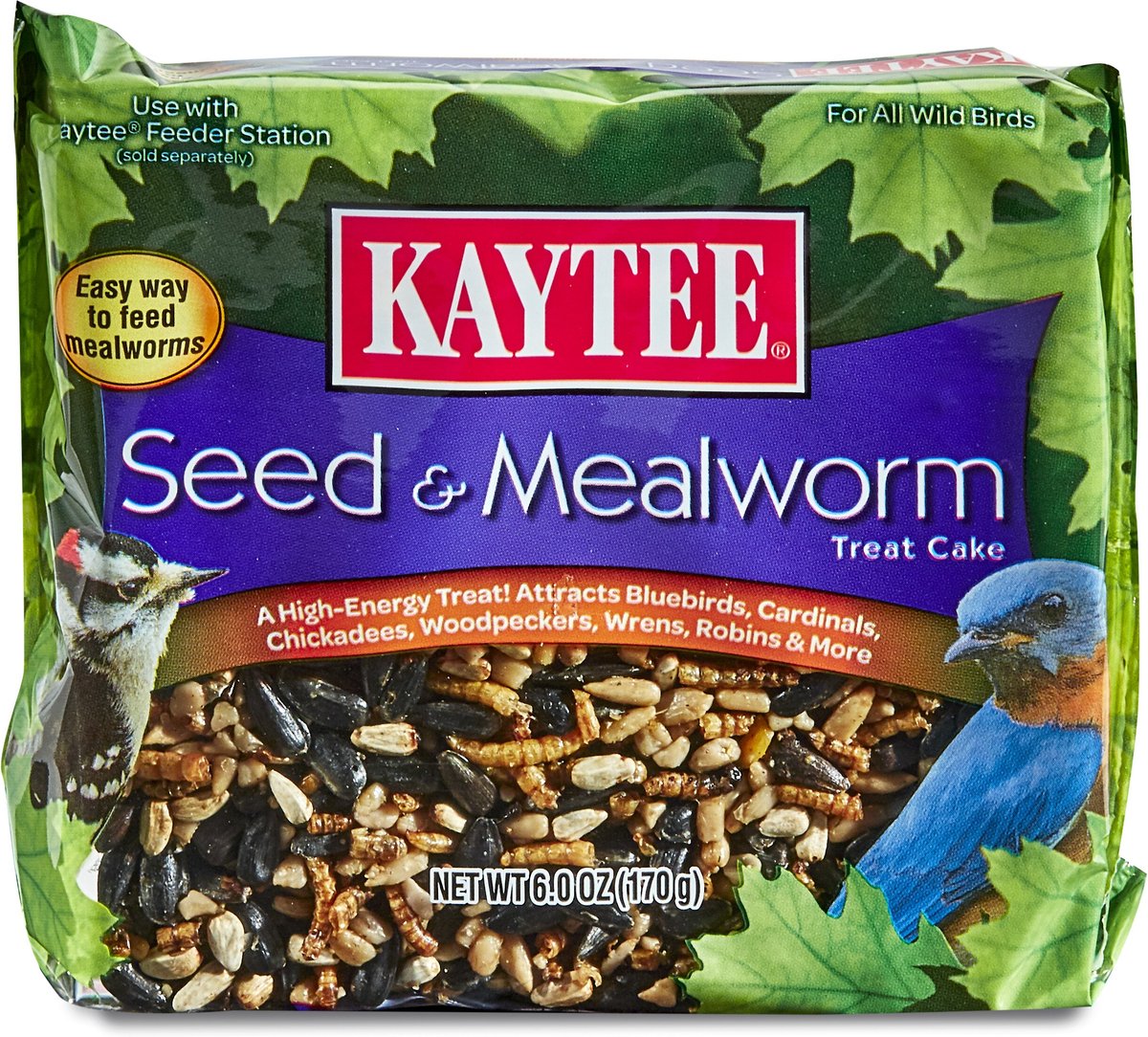
Added later: My Mockingbird loves this exact suet mix,

I also ordered some red bottle feeders, hoping to attract some hummingbirds next month, but I could not get toys and niceties for any other birds before I rewarded my constant bird friend–my mockingbird.
Will Northern Mockingbirds Eat Fresh Fruit?
“Yes, northern mockingbirds eat fresh fruit. Their diet consists mainly of fruit, insects, and seeds. In the fall and winter, they eat more berries and wild fruits, sometimes including cultivated fruits. In the late spring and summer, they eat a lot of insects, especially beetles, grasshoppers, caterpillars, ants, and wasps.

Back to the day of the freeze” The day before that freeze was gray, and heard the call of a crow off in the distance. I also wrote about the crow’s haunting song.
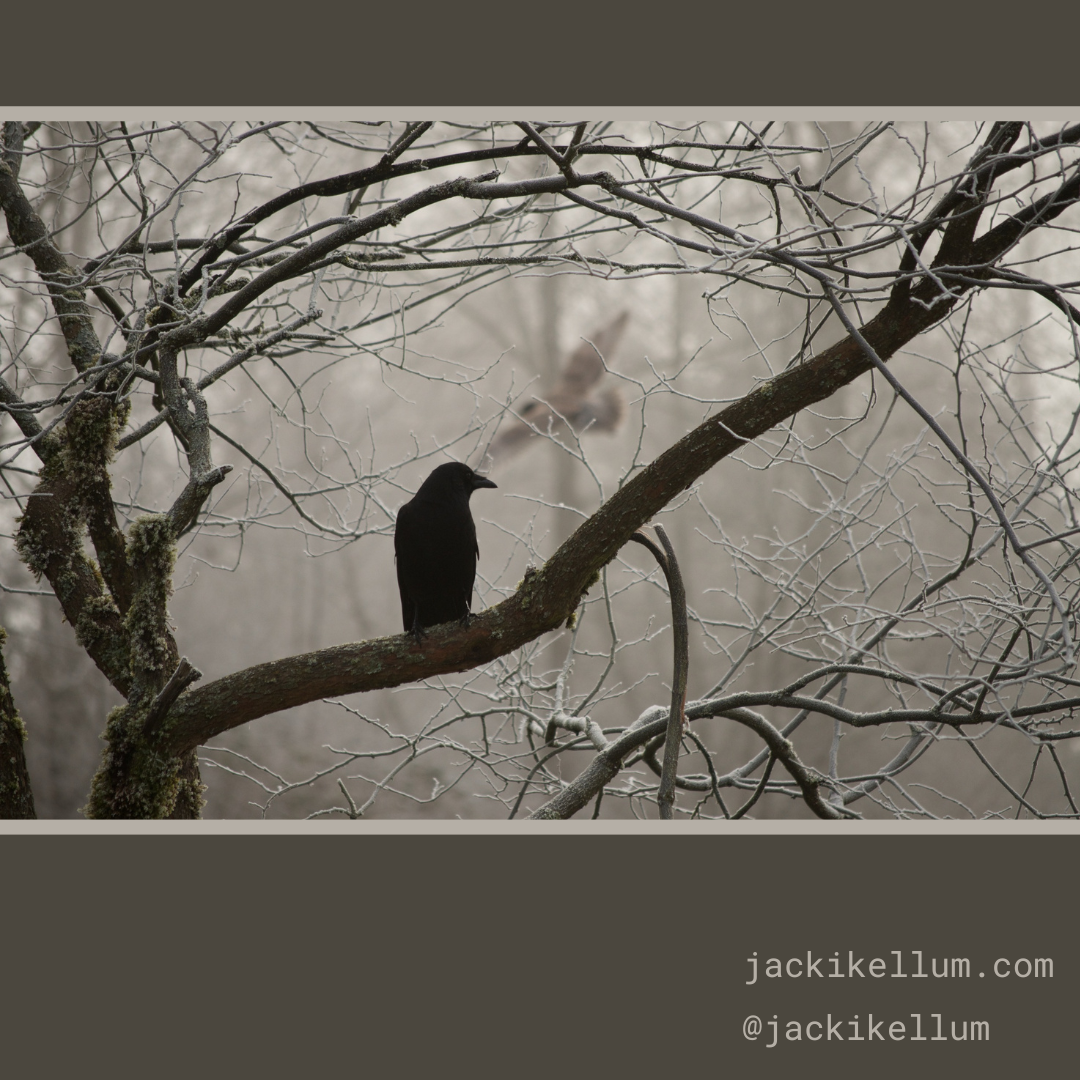
January 14, 2024
The sky was gray, and the air was frigid and damp. A bluejay landed on my trellis. Was he coaxing me to pour some warm water into his frozen birdbath? It was quiet outside, and I could hear a crow cawing from somewhere in the distance. Like the cry of a wounded soldier, his voice pealed across the winter sky. – Jacki Kellum Journal
I live alone, and I spend much of my time outside in my garden. Many days, the birds’ voices are the only ones I hear.
Today, I found a great site that shares information about birds in Mississippi. The post includes the songs of each bird.
1. Northern Cardinal
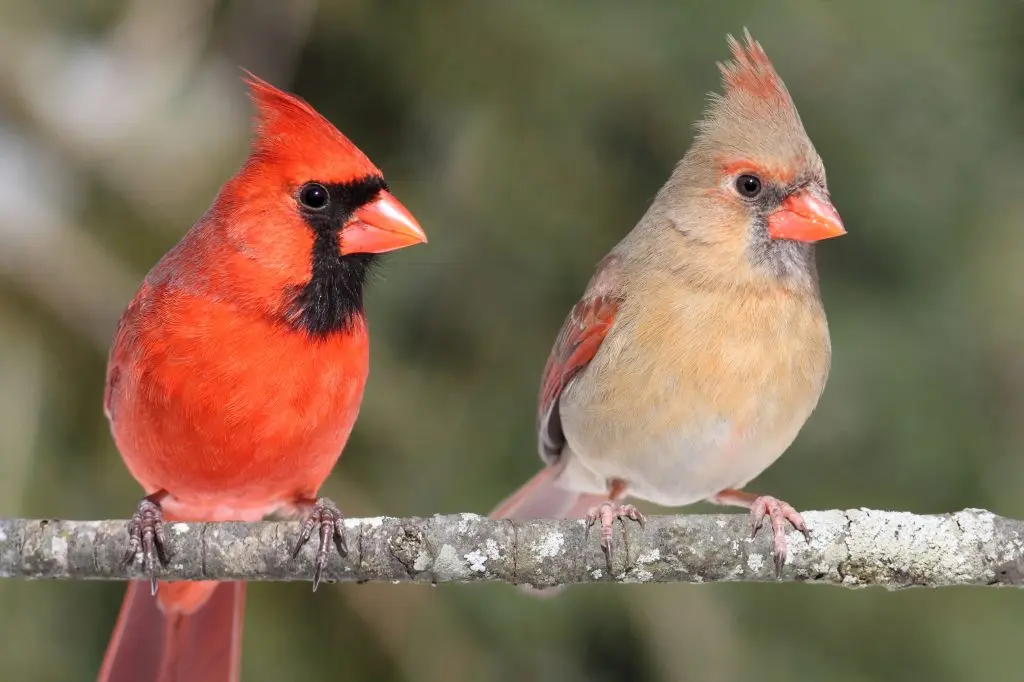
“Northern Cardinals are the most frequently spotted birds in Mississippi and are residents of the state all year. …
“The bright red male Northern Cardinal with black around its face is an incredible sight, especially against a white winter background. They also have red crests and beaks.
“Females are also a little showy with their brown coloring, sharp brown crest, red highlights, and red beaks.
- Cardinalis cardinalis
- Length: 8.3-9.1 in (21-23 cm)
- Weight: 1.5-1.7 oz (42-48 g)
- Wingspan: 9.8-12.2 in (25-31 cm)
“Northern Cardinals live in the Eastern half of the US and some states in the south as far west as Arizona.
“Attract Northern Cardinals to your backyard with feeders full of sunflower seeds, peanut hearts, millet, and milo. They will feed from large tube feeders, hoppers, platform feeders, or food scattered on the ground.”
2. Blue Jay
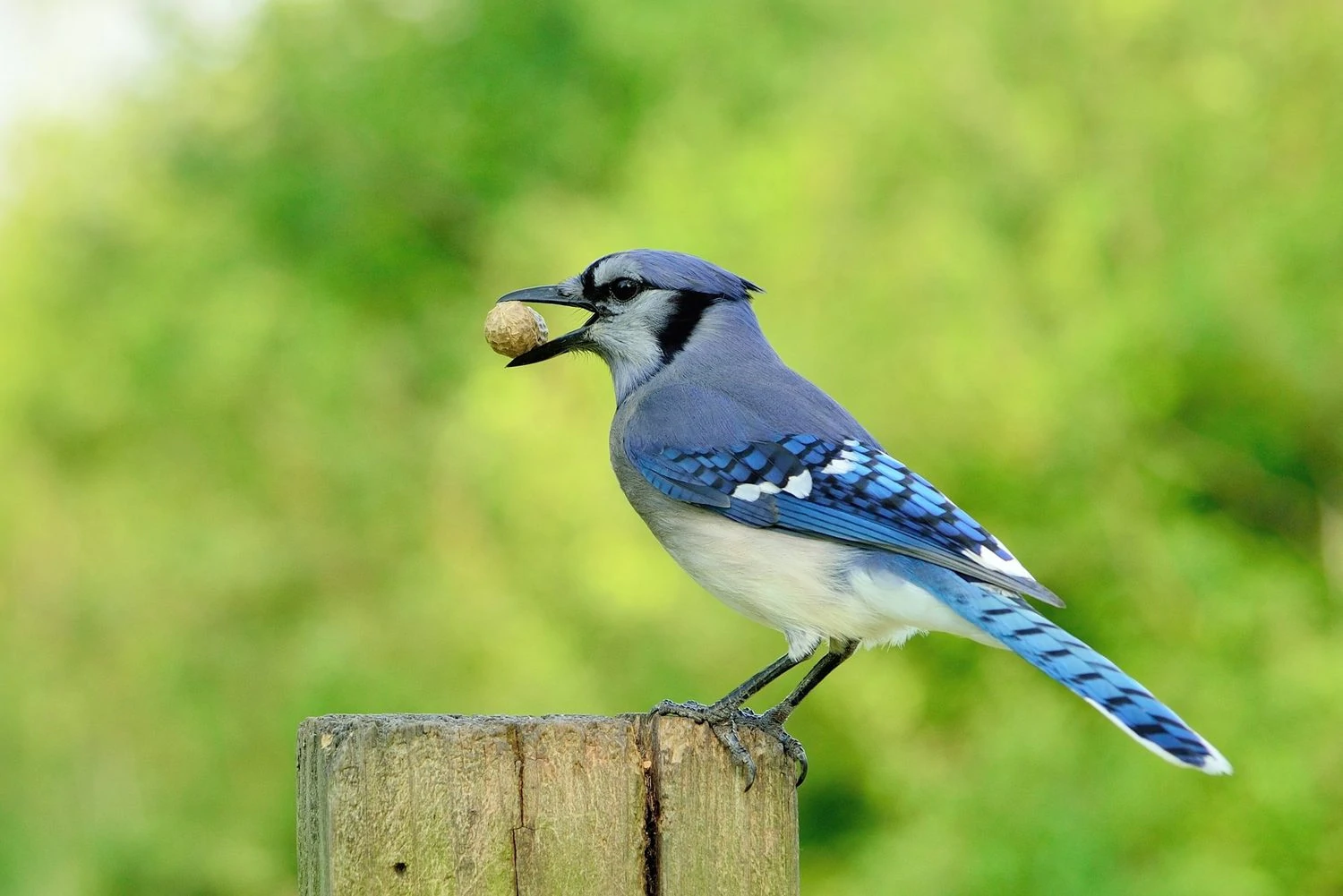
“Blue Jays live in Mississippi all year round. …
“Blue Jays are common large songbirds with a blue upright crest, blue and black backs, and white undersides.
- Cyanocitta cristata
- Length: 9.8-11.8 in (25-30 cm)
- Weight: 2.5-3.5 oz (70-100 g)
- Wingspan: 13.4-16.9 in (34-43 cm)
“Blue Jays live in eastern US states and Southern Canada all year. Some birds will migrate west for winter but not very frequently.
“They are noisy birds that travel in family groups eating acorns when available. They can be found in forests, mainly near oak, as they eat acorns. They can also be found in backyards near feeders. As well as acorns, they eat insects, nuts and seeds, and grain. They may also take eggs from nests or take nestlings.
“Blue Jays are large birds and prefer to fly in, grab a peanut or sunflower seed and take it away to feed. They prefer platform or tray feeders to make it easy to make a quick exit.
“Attract Blue Jays to your backyard with peanuts, sunflower seeds, and suet. They prefer these on open tray feeders or hopper feeders on a post. They will also enjoy a birdbath.”
4. Northern Mockingbird
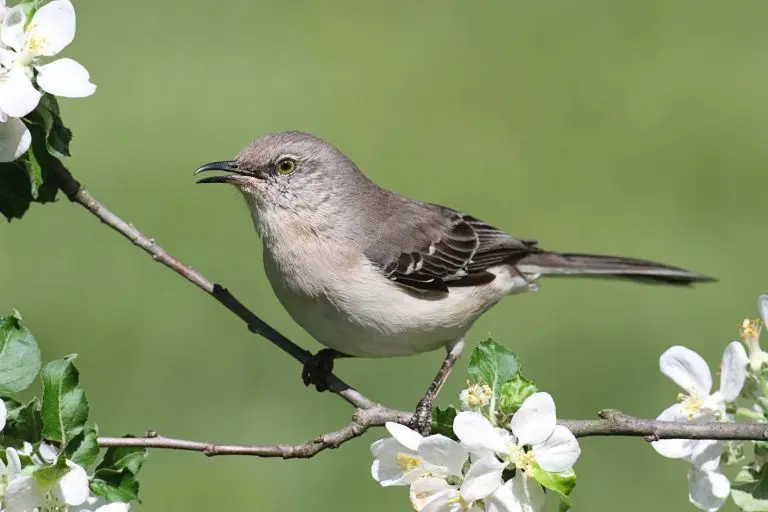
“Northern Mockingbirds can be found in Mississippi all year. …
“Northern Mockingbirds are medium-sized songbirds with small heads and long tails. They are a gray-brown color and slightly paler on the underside than their back, and they have two white wingbars visible in flight.
- Mimus polyglottos
- Length: 8.3-10.2 in (21-26 cm)
- Weight: 1.6-2.0 oz (45-58 g)
- Wingspan: 12.2-13.8 in (31-35 cm)
“Northern Mockingbirds do not migrate and can be spotted across the lower 48 and southern Canada.
“They are usually seen alone or in pairs and aggressively defend their territory. A male mockingbird can learn around 200 songs in its life, copying other birds’ songs, and they can sing all through the day and into the night.
“Attract more Northern Mockingbirds to your backyard by planting fruiting trees or bushes, including hawthorns, mulberries, and blackberry brambles. They don’t often visit feeders, but they will come to open lawn areas.”
[I am planting blueberries and hawthorns for my mockingbird friend,]
7. Carolina Chickadee
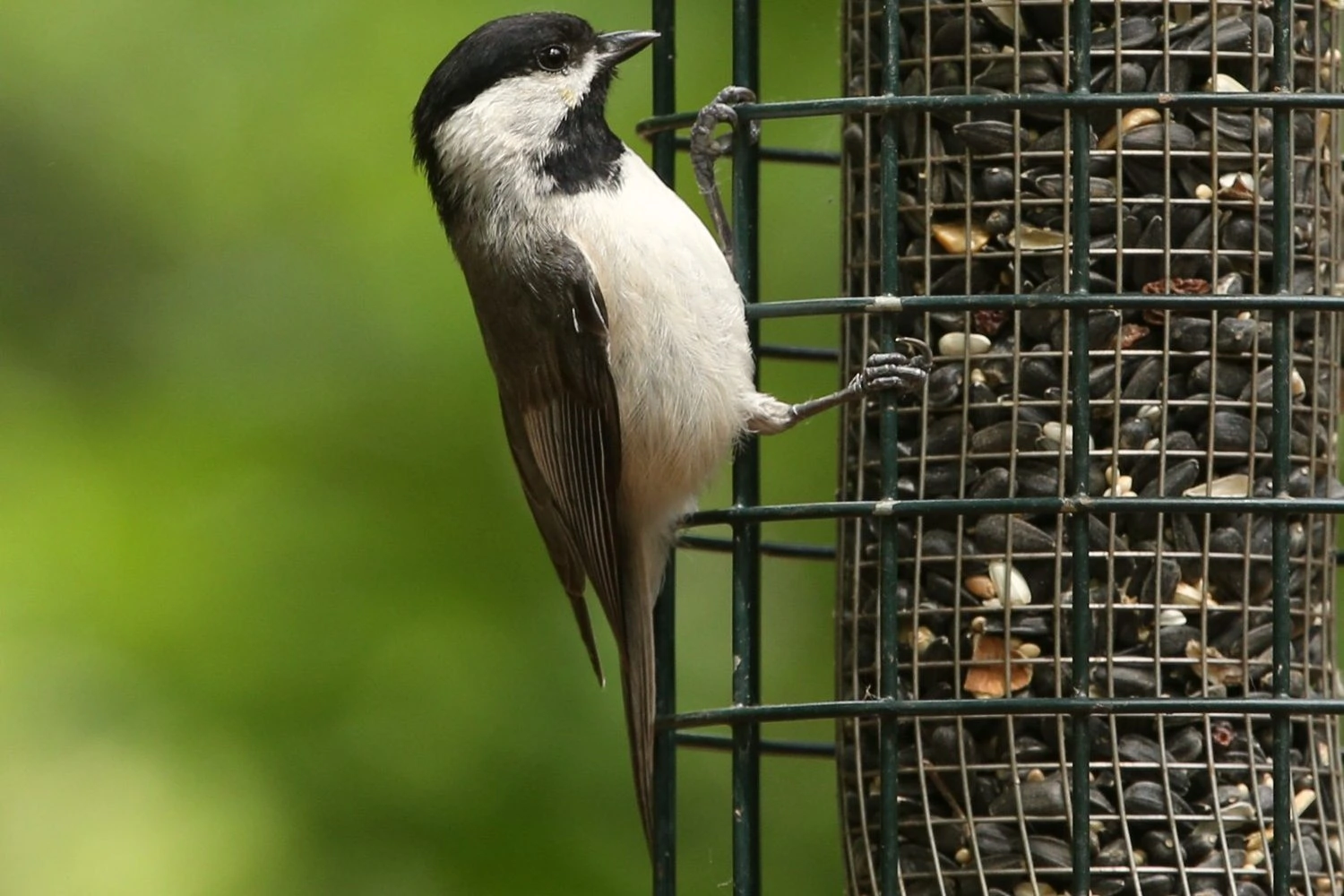
Carolina Chickadees do not migrate and are residents of Mississippi all year. They are very common here and are recorded in 29% of summer checklists and 33% of winter checklists submitted by bird watchers for the state.
Carolina Chickadees are tiny birds with large heads, black caps and necks, white cheeks and bellies, and soft gray backs, wings, and tails.
They are visually very similar to the Black-capped Chickadee, and they interbreed where their range overlaps.
- Poecile carolinensis
- Length: 3.9-4.7 in (10-12 cm)
- Weight: 0.3-0.4 oz (8-12 g)
- Wingspan: 5.9-7.9 in (15-20 cm)
Carolina Chickadees can be found in forested areas, parks, and backyards in eastern and southeastern US states all year.
Attract Carolina Chickadees to your backyard feeders with black oil sunflower seeds, nyjer seeds, suet feeders, or peanuts. They will feed on most types of feeders, including tube feeders, suet cages, or platform feeders. They will also nest in nest boxes or nest tubes.
You should find out all about the other sociable and inquisitive chickadees in Mississippi.
8. Mourning Dove
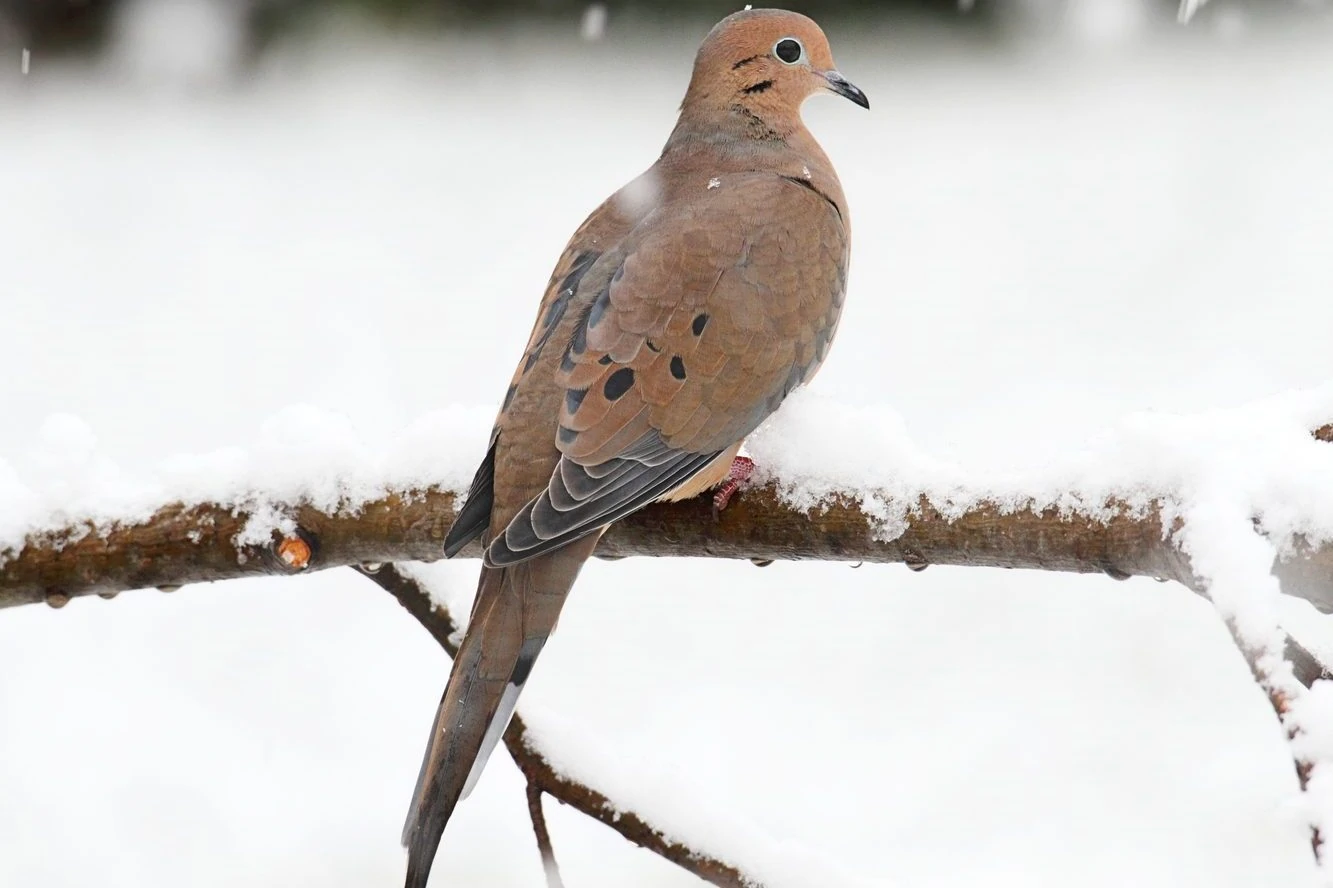
Mourning Doves are very common and can be spotted all year in Mississippi. They occur in 48% of summer checklists and 33% of winter checklists for the state.
Mourning Doves are graceful small-headed birds with plump bodies and long tails. They are a soft brown color with black spots on the wings. Males are slightly heavier than females.
- Zenaida macroura
- Length: 9.1-13.4 in (23-34 cm)
- Weight: 3.0 -6.0 oz (96-170 g)
- Wingspan: 17.7 in (45 cm)
Mourning Doves are common over all of the lower 48 all year but may migrate after breeding from the north of the Midwest and southern Canada.
Mourning Doves can be seen perching on telephone wires and foraging for seeds on the ground in grasslands, fields, and backyards. They can also be found in open areas or woodland edges.
14. White-throated Sparrow
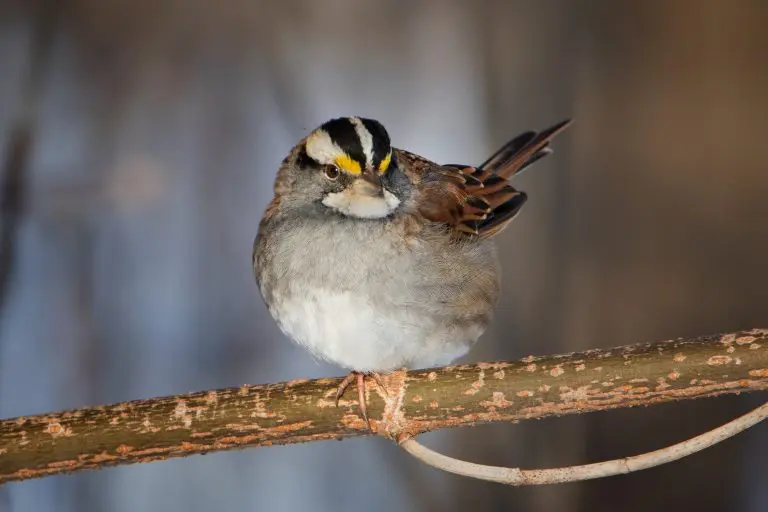
“White-throated Sparrows are frequently spotted in Mississippi during winter and appear in 26% of checklists at this time. They stay here from October to May.
“White-throated Sparrows have a distinctive black and white striped head, bright white throat, and yellow between the eye and bill. Their backs are brown, and underneath is gray.
- Zonotrichia albicollis
- Length: 6.3-7.1 in (16-18 cm)
- Weight: 0.8-1.1 oz (22-32 g)
- Wingspan: 7.9-9.1 in (20-23 cm)
“White-throated Sparrows are migratory birds, breeding mainly in Canada before heading south in winter to eastern and southern US states and the Pacific Coast.
“You can find White-throated Sparrows on the ground in forests and woods and along the edges of wooded areas, often in large flocks.
“White-throated Sparrows’ diet is mainly seeds of grasses and weeds and fruits such as grape, sumac, mountain ash, blueberry, blackberry, and dogwood. They will also eat many insects from the forest floor, especially in summer.
Attract White-throated Sparrows to your backyard with millet and black oil sunflower seeds on platform feeders.
Sparrows are known as LBJs (Little brown jobs) but if you want to know more, check out this guide to sparrows in Mississippi.
15. American Robin
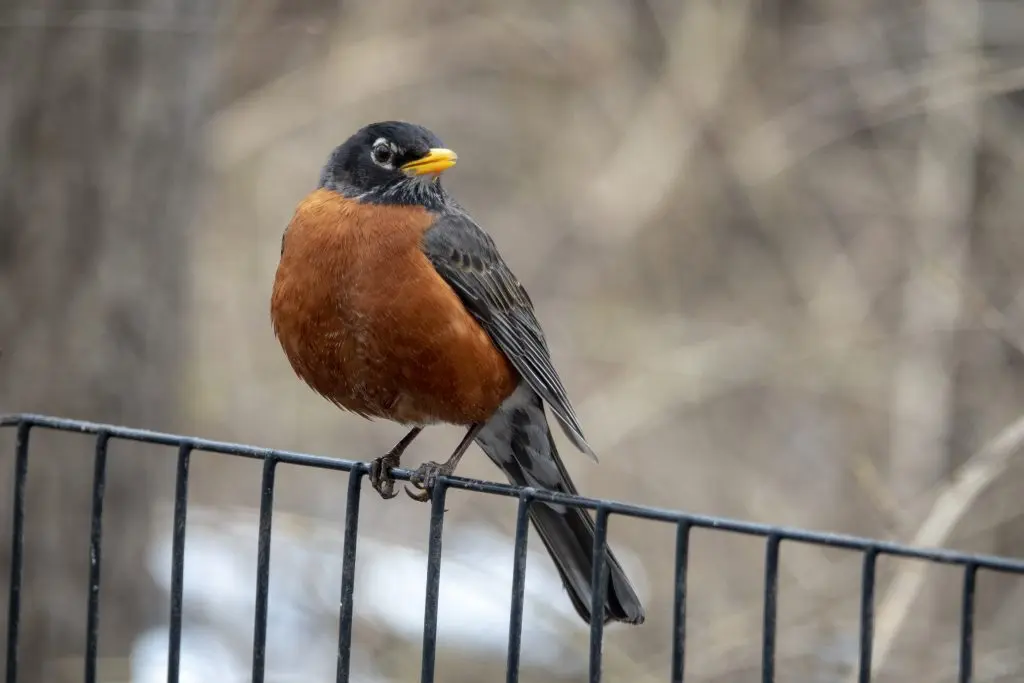 American Robin
American RobinI have a funny story about robins. When my youngest child was about 4, I showed my 4-year-old child a robin who was grazing in our yard. A few minutes later, my son and I drove into town, and I saw another robin. I kiddingly said to my son, “There he is again. There’s our robin.”
My youngest child was not into jokes, and he took my words literally, He responded, “How did he get here?”
If nothing else, that is a comment about how very common robins are in Mississippi.
American Robins are a common sight on lawns eating earthworms. They have black heads and backs with red or orange breasts. They tend to roost in trees in winter, so you are more likely to see them in your backyard in spring.
- Turdus migratorius
- Length: 7.9-11.0 in (20-28 cm)
- Weight: 2.7-3.0 oz (77-85 g)
- Wingspan: 12.2-15.8 in (31-40 cm)
“American Robins are residents in the lower 48 and the coast of Western Canada and Alaska. Those that breed in Canada and inland Alaska move south for the winter.
“American Robins can be found in many habitats, from woodlands, forests, and mountains to fields, parks, and lawns. They eat earthworms, insects, snails, and fruit.
“Attract American Robins to your backyard with sunflower seeds, suet and peanut hearts, fruit, and mealworms. Platform feeders are best or food scattered on the ground. Also, try planting some native plants that produce berries, such as juniper, sumac, hawthorn, and dogwood.”
[I have planted hawthorns and several dogwoods. I plan to add several blueberries and some sumacs.]
17. American Crow
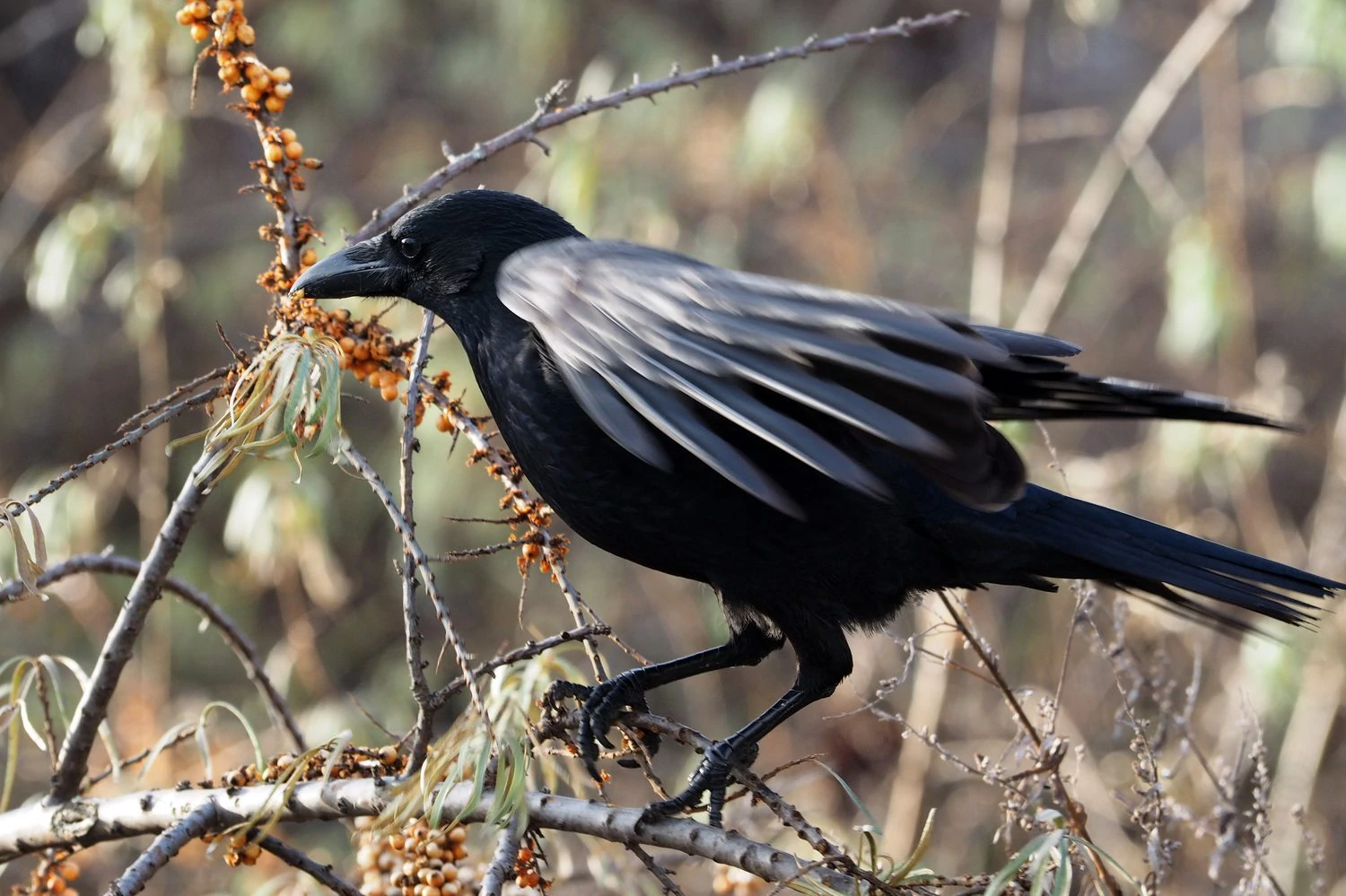
“American Crows are very common and found all year in Mississippi.
“American crows are large all-black birds that make a hoarse, cawing sound.
- Corvus brachyrhynchos
- Length: 15.8-20.9 in (40-53 cm)
- Weight: 11.2-21.9 oz (316-620 g)
- Wingspan: 33.5-39.4 in (85-100 cm)
“American Crows are residents all year in most of the lower 48 and the Pacific Coast in Canada and Alaska. Those that breed in Canada and the northern Midwest migrate south for winter.
“They are common birds found in most habitats, including treetops, woods, fields, beaches, or towns.
“They eat most things and usually feed on the ground, eating earthworms, insects, seeds, and fruit. They also eat fish, young turtles, mussels, and clams and will even eat eggs and nestlings of many species of birds.
“In winter, American Crows gather in large numbers of up to two million crows to sleep in noisy communal roosts.
“Attract American Crows to your backyard by scattering peanuts, but they can become a nuisance as they are attracted by garbage or pet food if left out.”
Crows [and/or Ravens] fascinate me.
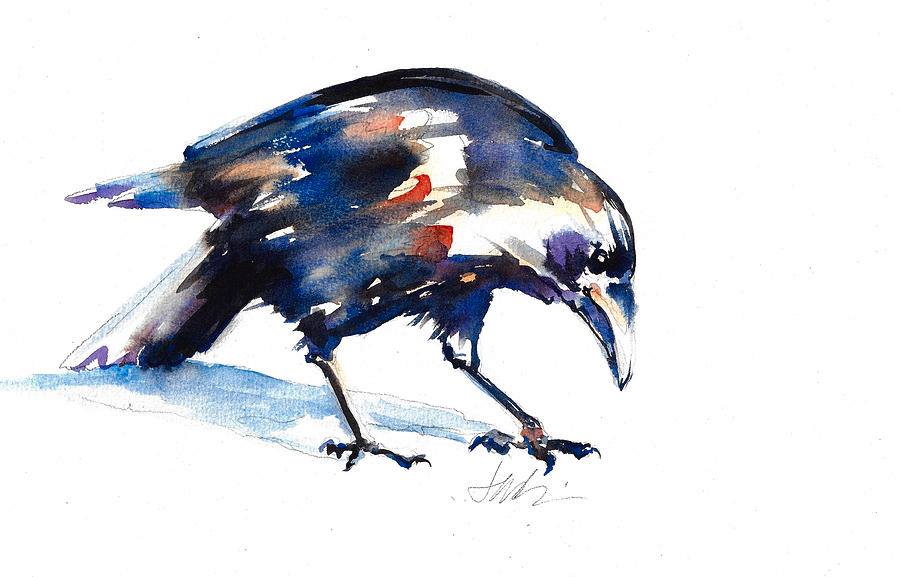
The Raven – Jacki Kellum Watercolor
Common Grackles are resident all year in southeastern states, but those that breed in Canada and the Midwest migrate south.
They eat many crops but mostly corn, and they gather in noisy groups high up in trees. Unfortunately, they will also eat garbage and so can be a nuisance. Their habitat is varied and includes open woodlands, marshes, parks, and fields.
They may gather in their millions in winter to forage and roost, mixed in with other species of blackbirds.
Attract more Common Grackles to your backyard with mixed grain and seed sprinkled on the ground or platform feeders.
30. House Sparrow
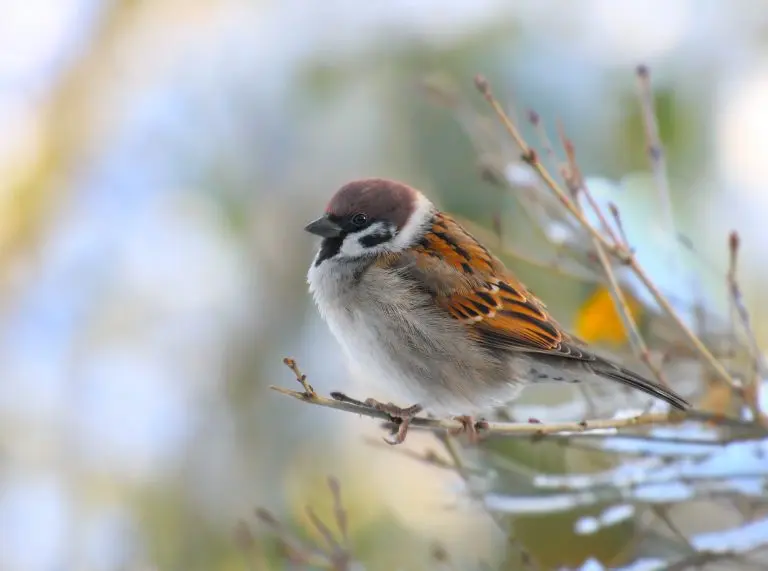
House Sparrows are an introduced species in Mississippi that can be spotted here all year. They do not migrate and occur in 13% of summer checklists and 11% of winter checklists for the state.
The House Sparrow is another introduced species that has done very well and is now one of the most common birds. They have gray and brown heads and white cheeks. Their backs are black and brown, and their bellies are gray.
- Passer domesticus
- Length: 5.9-6.7 in (15-17 cm)
- Weight: 0.9-1.1 oz (27-30 g)
- Wingspan: 7.5-9.8 in (19-25 cm)
House Sparrows live in the US and Southern Canada all year.
You can find them near houses and buildings, and they can be pretty tame, and they may even eat out of your hand.
House Sparrows eat mostly grain and seed as well as discarded food. They can be considered a pest because they are non-native, but they are found in backyards even if you do not feed them.
Attract House Sparrows to your backyard feeders with most kinds of birdseed, including millet, corn, and sunflower seeds.
